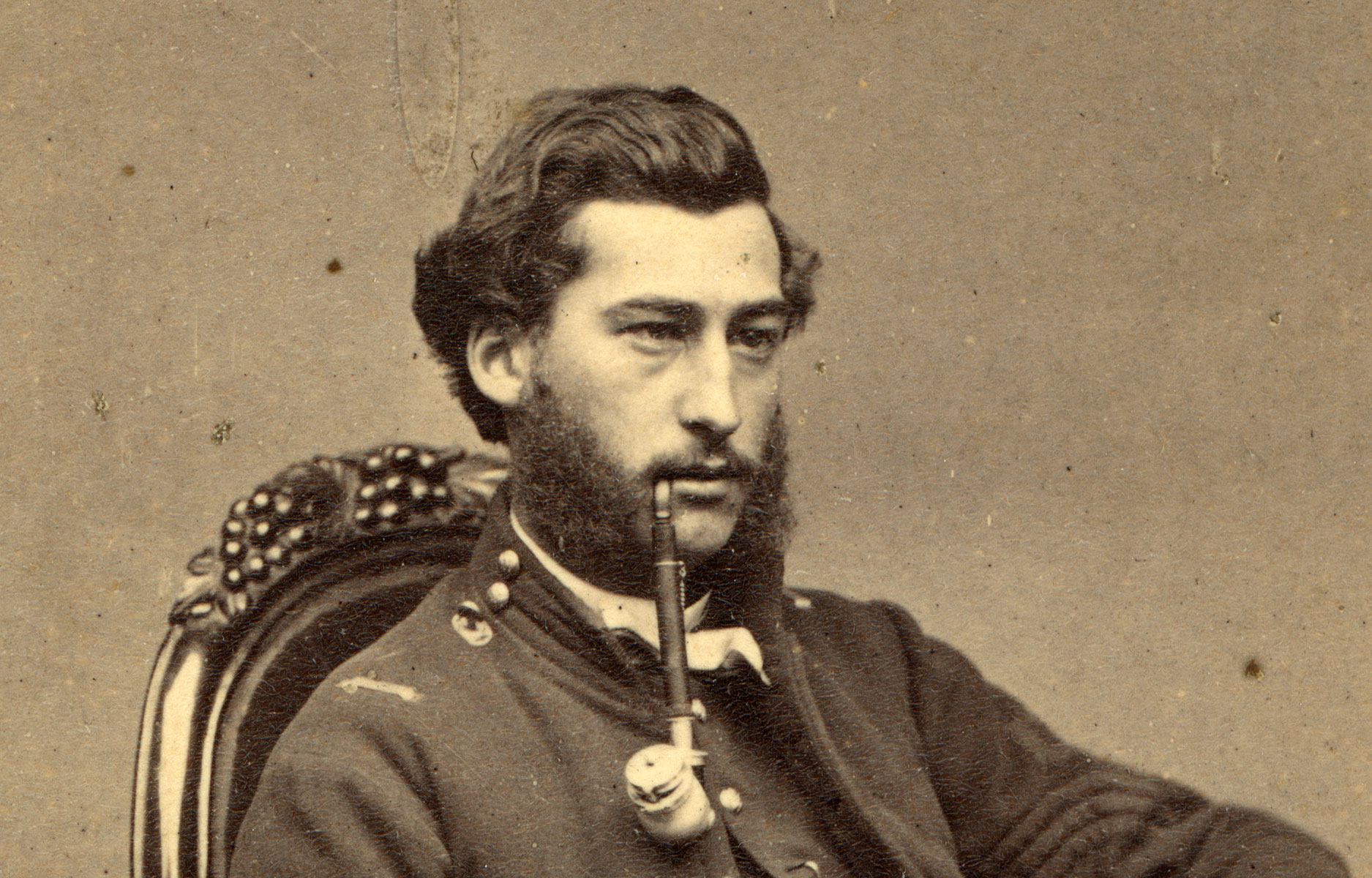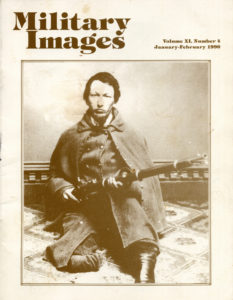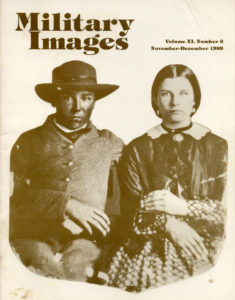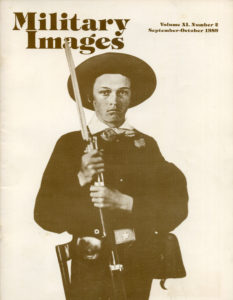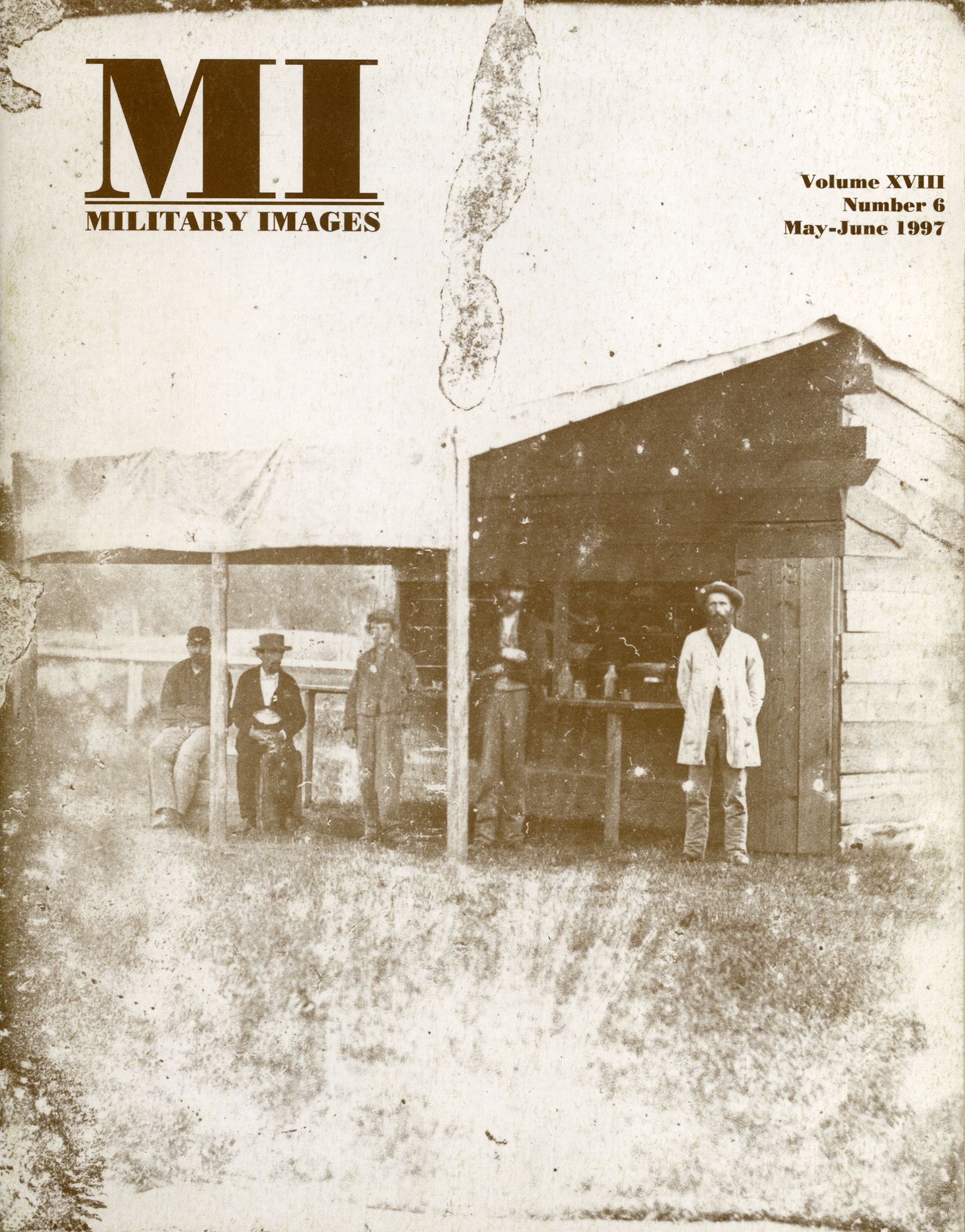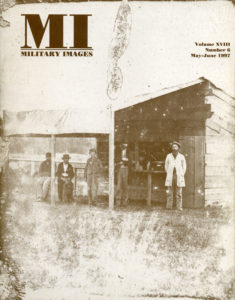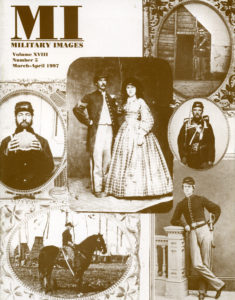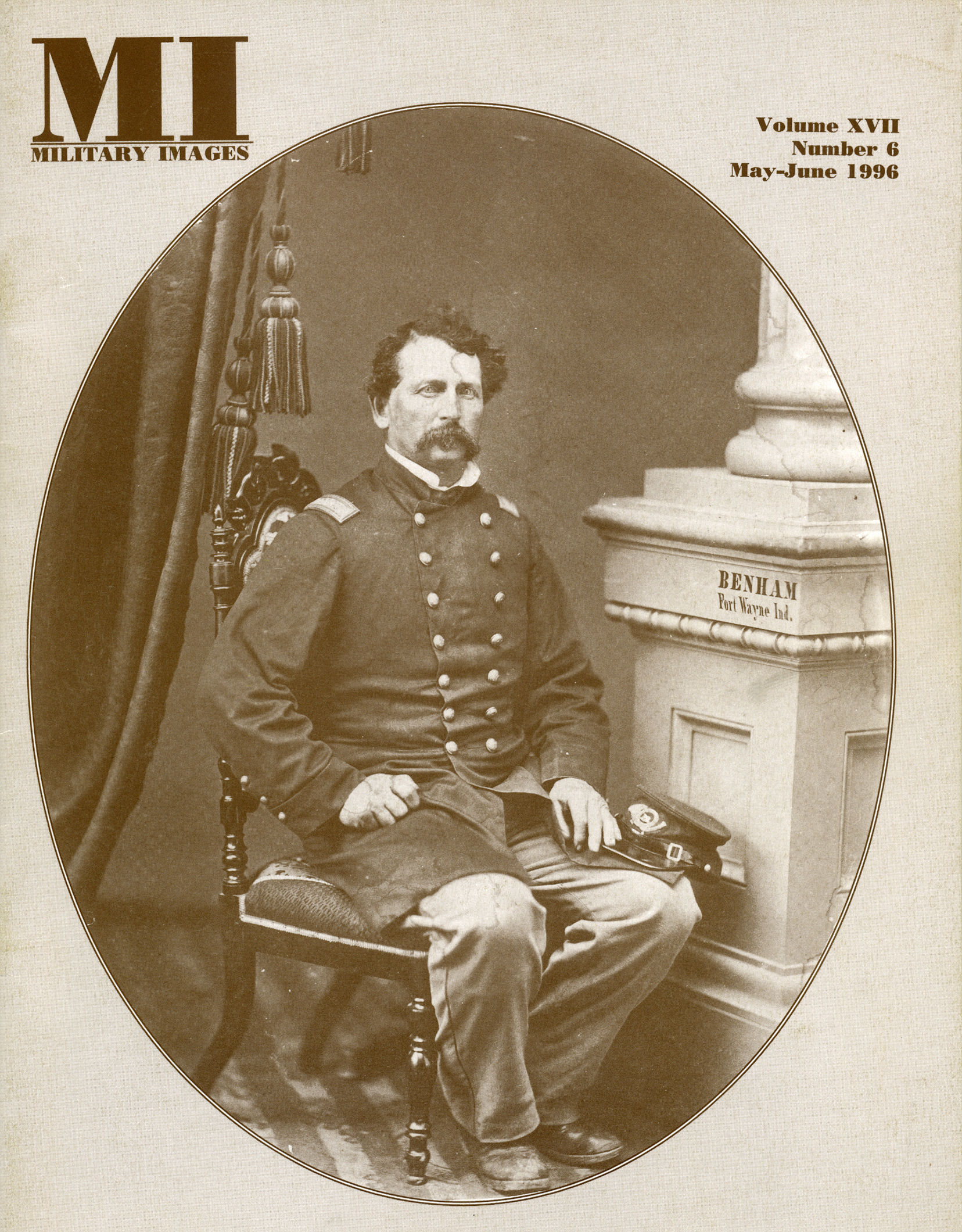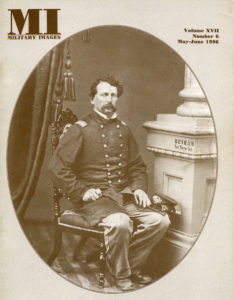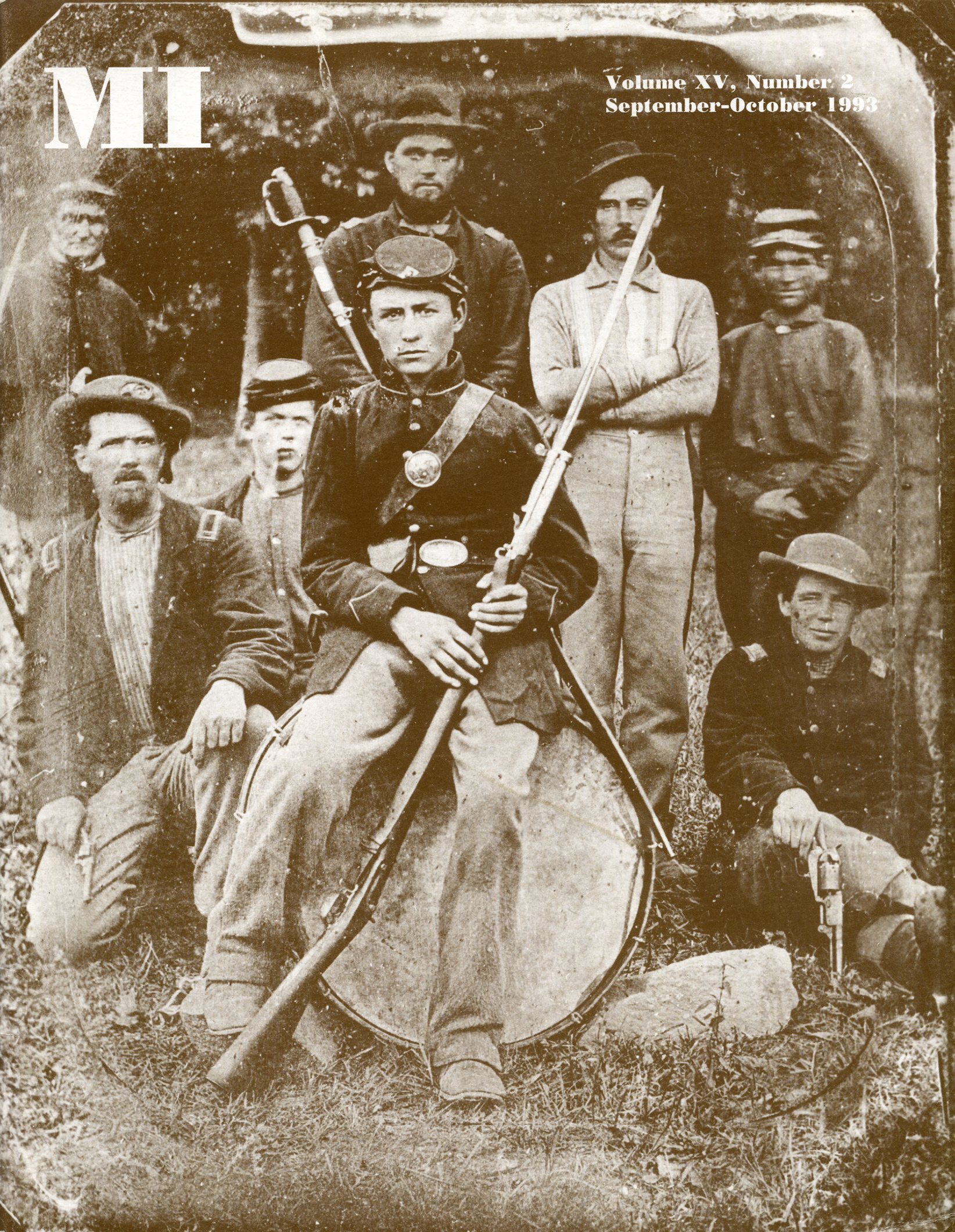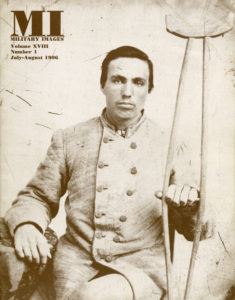The complete issue
Vol. XI, No. 4
(32 pages)
Print edition: Visit our store to check availability
Digital edition: Visit JSTOR.org to purchase
Subscribe to MI
Explore the MI Archives: Browse | Advanced search | Tutorial
Inside
Cover image
A carte de visite from the New York State Division of Military & Naval Affairs pictures James W. Singleton, who appears to have suffered amputation of the right foot.
Editor’s Desk (p. 1)
The editor wishes subscribers a Happy New Year—and a new decade.
Mail Call (p. 3)
Letters to the editor include a note from the Save Historic Antietam Foundation, Inc., on efforts to establish an Irish Brigade monument on the battlefield, praise for Greg Mast’s Tar Heels and a firsthand account of the hanging of Sam Davis.
Passing in Review (pp. 4-5)
A total of 11 publications are mentioned: Union Forces of the American Civil War (Arms and Armor Press) by Philip Katcher, Antietam: The Soldier’s Battle (White Mane Publishing) by John Priest, Paper Medicine Man: John Bourke and His American West (University of Oklahoma Press) by Joseph C. Porter, Rebels and Yankees: Fighting Men of the Civil War (Gallery Books) by William C. Davis with Russ Pritchard and more.
G.O. No. 286 by Wendell Lang (pp. 6-7)
A general order dated Nov. 22, 1864, allowed Union officers to dispense with shoulder straps and other conspicuous insignia of rank. This was part of an effort by the military to prevent enemy sharpshooters from killing officers. Three portraits illustrate the text.
John Coffer, Photographer: Profile of an antiquarian lensman by Philip Katcher (pp. 8-11)
The story of modern tintype maker John A. Coffer of Dundee, N.Y., discusses how he got started, the process of photography and other aspects of his work. The narrative is illustrated with a half-dozen contemporary images.
The First Navy Cross: Biography of a Hero by Charles Schwartz (pp. 12-13)
The story of Charles Joseph Libby and his courage after the vessel in which he was assigned, the Shaw, was accidently struck by the HMS Aquitania. Libby’s portrait and other images illustrate the narrative.
An Ironclad Forgery by Jerry Harlowe (pp. 14-15)
The author shares the backstory of a 100-year-old stereoview that purports to be the famed ironclad Monitor when in fact it is a doctored view of the monitor class warship Passaic.
Empire State Soldiers: Images from New York’s Bureau of Military Statistics by Michael Winey (pp. 16-24)
In late 1862, the Bureau of Military Statistics of the State of New York was established to preserve soldier names, regimental records and community aid efforts to the military. What followed was an impressive effort to catalog, among other items, more than 2,000 soldier photographs. A sampling of these images, 24 in total, is included in this survey. They include the first chief of the Bureau, Col. Lockwood Lyon Doty, a trio of privates from the 93rd New York Infantry who appear to be former prisoners of war, and portraits of Capt. William Glenny, 64th New York Infantry, before and after his wounding at the Battle of Fair Oaks, Va.
Uniforms & History by Michael J. McAfee (p. 25)
In “143rd Regiment, New York Volunteer Infantry, 1862,” McAfee explores the dress and regimental record of this organization. The text is illustrated with a portrait of Sgt. Austin Race of Company E.
Zouaves in the Streets of Baltimore by Ross Kelbaugh (pp. 26-27)
A photograph of soldiers purported to be the 5th New York in the streets of Baltimore during the winter of 1861-1862 is in fact the 6th Maryland National Guard in 1868. The author explains how he solved the photographic mystery.
Stragglers (pp. 28-32)
A total of 11 images submitted by readers includes an eight-plate tintype of a locomotive, a group of Union soldiers massed beneath a great arch to which is attached a shield with the name McClellan written upon it, and identified Marine, circa 1900-1914, and more.
Sutlers’ Row (Inside back cover)
Back cover
Quarter-plate ambrotype circa 1854 of an unidentified soldier photographed by Isaac Rehn of Philadelphia, Pa.
